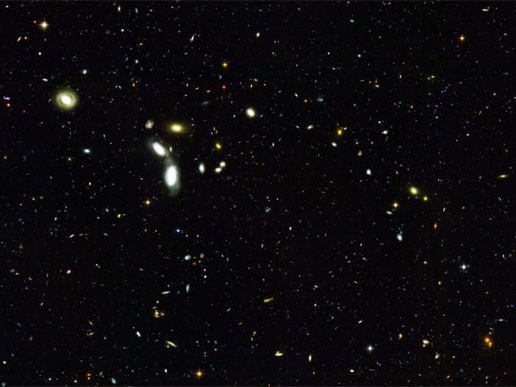Do distant galaxies sleep without forming new stars?

If some distant galaxies, after being awake many billions of years, do feel tired you could hardly blame them. But if they were caught sleeping 12 billion light years without forming stars what will you do?
Previously, astronomers knew galaxies in the nearby universe seem to be either awake or asleep, but they did not know about distant galaxies. However, a Yale University research showed that galaxies display one of two distinct behaviors: they are either awake or asleep, actively forming stars or are not forming any new stars at all.
The study showed that even very young galaxies as far away as 12 billion light years are either awake or asleep as well, meaning galaxies have behaved this way for more than 85 percent of the history of the universe. Scientists, by studying younger galaxies, can get a better understanding of how older galaxies behave.
Based on the light the galaxies emit, the researchers were able to decipher the dual behavior. Because of the physics of star formation, active, wakeful galaxies appear bluer, while the light emitted by passive, sleepy galaxies tends toward the redder end of the spectrum, according to the release.
Looking at galaxies farther away is like looking back in time when they were much younger, because of how long it takes the light they emit to reach us here on Earth. We wanted to study the properties of distant galaxies with the deepest and most complete sample of galaxies to date, something that has never been done before at these early times in the universe. The fact that we see such young galaxies in the distant universe that have already shut off is remarkable,” said Kate Whitaker, a Yale University graduate student and lead author of a recent paper.
The survey took 75 nights peering into the distant universe and collecting light from 40,000 galaxies ranging in distance from the nearby universe out to 12 billion light years away, and was funded by the National Science Foundation and NASA grants, said Whitaker.
Whitaker and her colleagues fabricated a new set of filters, each one sensitive to different wavelengths of light, which they used on a 4-meter Kitt Peak telescope in Arizona, in order to determine whether the galaxies were asleep or awake.
We don't see many galaxies in the in-between state, said Pieter van Dokkum, a Yale astronomer and another author of the paper. This discovery shows how quickly galaxies go from one state to the other, from actively forming stars to shutting off.
Whether the sleeping galaxies have completely shut down remains an open question, Whitaker said. However, the new study suggests the active galaxies are forming stars at rates about 50 times greater than their sleepy counterparts.
Next, we hope to determine whether galaxies go back and forth between waking and sleeping or whether they fall asleep and never wake up again, van Dokkum said. We're also interested in how long it takes galaxies to fall asleep, and whether we can catch one in the act of dozing off.
© Copyright IBTimes 2024. All rights reserved.





















